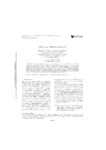A Prototype of EEG System for IoT

Use este enlace para citar
http://hdl.handle.net/2183/25671Coleccións
- GI-GTEC - Artigos [186]
Metadatos
Mostrar o rexistro completo do ítemTítulo
A Prototype of EEG System for IoTAutor(es)
Data
2020-05-04Cita bibliográfica
Laport, F., Dapena, A., Castro, P. M., Vazquez-Araujo, F. J., & Iglesia, D. (2020). A Prototype of EEG System for IoT. International Journal of Neural Systems, 2050018-2050018
Resumo
[Abstract] In this work, we develop open source hardware and software for eye state classification and integrate it with a protocol for the Internet of Things (IoT). We design and build the hardware using a reduced number of components and with a very low-cost. Moreover, we propose a method for the detection of open eyes (oE) and closed eyes (cE) states based on computing a power ratio between different frequency bands of the acquired signal. We compare several real- and complex-valued transformations combined with two decision strategies: a threshold-based method and a linear discriminant analysis. Simulation results show both classifier accuracies and their corresponding system delays.
Palabras chave
Electroencephalography
Internet of things
Prototypes
Signal processing
Internet of things
Prototypes
Signal processing
Versión do editor
Dereitos
Atribución 4.0
ISSN
1793-6462
0129-0657
0129-0657






